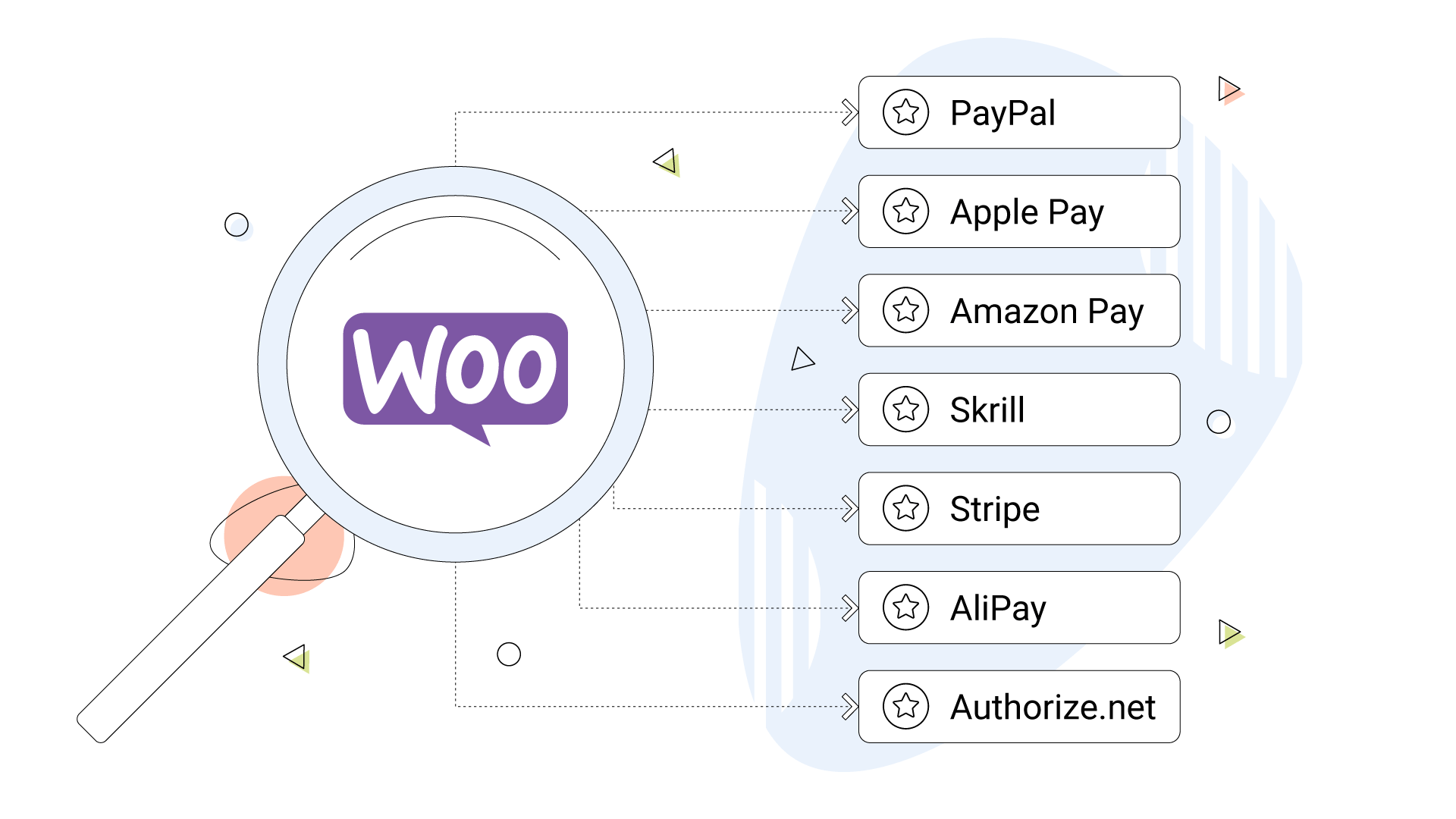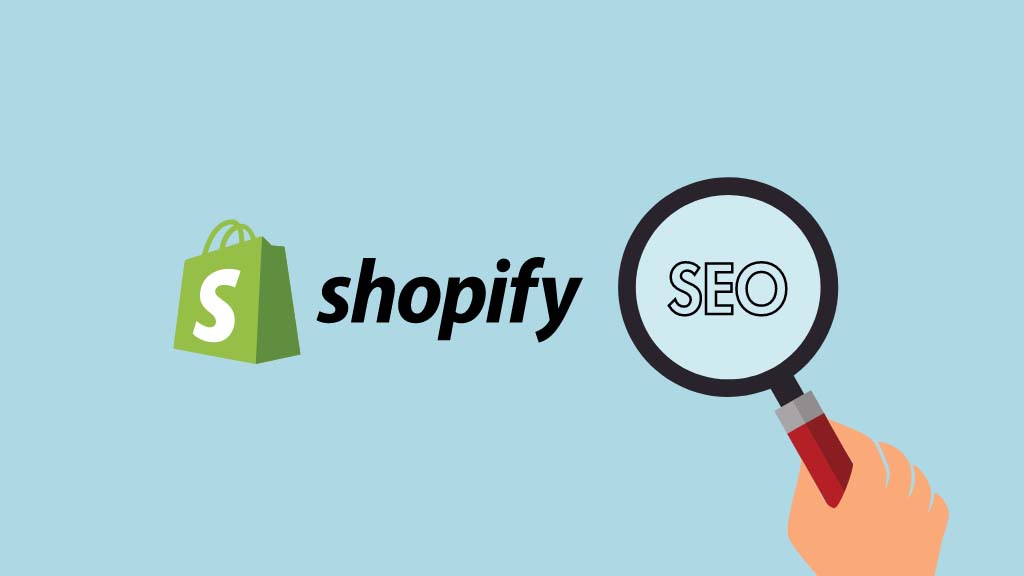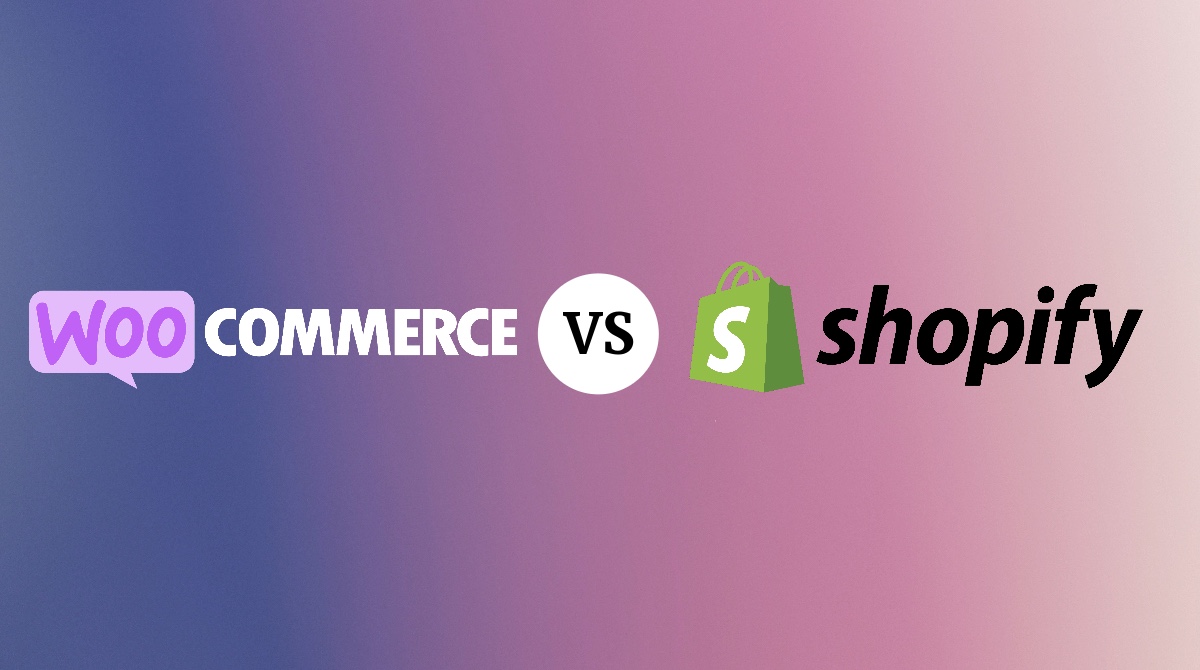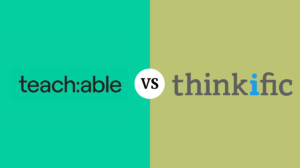Affiliate Disclosure: Some links here are affiliate ones, meaning we may earn a small commission if you click through and buy. It’s at no extra cost to you and helps keep The Conscious Customer content flowing. Thank you so much for your support!
When it comes to the heavyweight battle of e-commerce platforms, WooCommerce vs. Shopify is the match-up everyone’s talking about. Both have carved out significant spaces in the online selling arena, each boasting its own set of loyal followers and undeniable perks. But which one stands tall as the ultimate choice for your online store?
In this deep dive, we’ll break down each platform’s strengths, quirks, and features to help you make an informed decision. From user-friendliness to scalability, we’ve got all the juicy details lined up.
Whether you’re a seasoned online merchant or just dipping your toes in the e-commerce waters, this guide aims to equip you with all the knowledge you need to choose the right platform for your business.
Table of Contents
What is WooCommerce?
Imagine having a magic box that can transform your humble WordPress website into a bustling online marketplace. That magic box, dear friends, is WooCommerce.

So, what is WooCommerce exactly? In techie jargon, it’s an open-source e-commerce plugin for WordPress. Simply put, it’s your ticket to turning that blog about crochet or that portfolio of pet portraits into a money-making machine.
WooCommerce boasts an array of extensions and plugins. You can add anything from subscription services to complex payment gateways. Want to sell digital downloads or even drop-ship physical products? WooCommerce has you covered.
WooCommerce is also all about freedom. Since it’s open-source, you can tweak, adjust, and customize until your online store is as unique as a snowflake in a blizzard.
Before you rush off to download this gem, bear in mind that with great power comes… you guessed it, great responsibility. You’ll need to handle hosting, security, and those pesky software updates. But hey, Rome wasn’t built in a day—or by someone who wasn’t willing to get their hands dirty, right?

What is Shopify?
Ah, Shopify! The name alone conjures images of chic boutiques, savvy startups, and perhaps the ringing of virtual cash registers. But what is Shopify? If WooCommerce is a magic box, Shopify is your all-inclusive, five-star vacation package to the land of e-commerce.

In technical terms, Shopify is a hosted e-commerce platform. It is your one-stop shop for everything e-commerce. You don’t need to worry about hosting, security, or even how to display your “Add to Cart” button most enticingly—it’s all done for you.
Like your own personal genie, Shopify offers a range of built-in features. We’re talking customizable templates, inventory management, and even tools to help you dive into the world of online marketing.
However, all these amenities come at a price. You’ll be tied to a monthly subscription that varies based on your needs. Oh, and don’t forget transaction fees for each sale unless you use Shopify Payments. But, for many, the ease and convenience are worth every penny. Or shall we say, every digital penny?
As with all things in life, freedom comes with boundaries. Your customization options are somewhat limited compared to open-source platforms like WooCommerce. But then again, not everyone wants to build Rome; some just want a cozy shop on a digital Main Street.

Okay now let’s compare.
Ease of Use
Stepping into the realm of e-commerce can feel like choosing your path in a vast landscape. Between WooCommerce and Shopify, which path offers a smoother journey, and which one presents a more adventurous trek?
WooCommerce: Envision WooCommerce as the winding mountain trail. It’s a path that beckons the explorers, those who love charting their own course. The views from the peak are unmatched, and the sense of accomplishment is profound, but reaching there requires navigation, patience, and sometimes, backtracking to find the best route. It’s for those who revel in customization, eager to embrace every twist and turn.

Shopify: Now, picture Shopify as the well-paved highway. It’s straight, clear, and designed for speed. Signposts are frequent, guiding you efficiently towards your destination. While there might be fewer detours and secret spots to discover, the journey is swift and smooth, making it the top pick for those who prioritize getting from point A to B without a hitch.

When it comes to the ease of use in the WooCommerce vs. Shopify debate: Are you the trailblazer, setting out to craft a unique path, accepting challenges head-on? Or are you the highway traveler, seeking a direct and hassle-free route, with clear directions laid out?
Customization Options
Think of your online store like a playlist. Are you okay with a curated list, or do you want to remix the tracks and add your own beats?
WooCommerce: Meet the embodiment of “open-source” in e-commerce. WooCommerce lets you play DJ in the most expansive sense. Want to scratch, add a bass drop, or even change the entire song structure? Go for it. Its open-source architecture means you can adjust the code, integrate a wide range of plugins, and tweak the user interface until it’s an online store masterpiece that’s all you.

Shopify: Not open-source, but still remix-friendly. Shopify gives you a curated playlist that you can certainly tweak. Add some tracks, reorder the list, and adjust the bass, but remember, the original compositions aren’t yours to change. It’s easier but offers less control.

Payment Gateways
WooCommerce: Talk about options! With WooCommerce, you’re essentially in an e-commerce superstore of payment gateways. Whether it’s PayPal, Stripe, Square, or something more regional like PayU or Alipay, WooCommerce has you covered. Since it’s open-source, tech-savvy users can even integrate lesser-known or bespoke payment options like 2Checkout and Braintree. So many gateways are available at the WooCommerce Extension Store.
Now, WooCommerce does not slap on any transaction fees itself. However, the fees can vary based on the payment gateway you integrate. So, while WooCommerce is like an open dance floor inviting all gateways, the entry fee (or transaction fee) is determined by the gateway you groove with.

Shopify: When it comes to handling e-commerce finances, Shopify boasts its proprietary gateway, Shopify Payments. It’s like the VIP lane at a music festival – direct, hassle-free, and, best of all, without transaction fees. Yet, if you’re a fan of classics like PayPal, Stripe, or Worldpay, Shopify warmly welcomes these third-party gateways, too. But a heads-up: using them might incur added transaction costs unless you’re rolling with the Advanced Shopify plan.

SEO Capabilities
Think of the vast, sprawling world of the internet as a colossal library. Your e-commerce platform is but one book on a shelf filled with countless others. Now, how do you ensure that your book is the one people pull off the shelf? That’s where SEO, or Search Engine Optimization, comes into play. SEO is the art and science of making your ‘book’ easily findable on Google and other search engines, so when people are searching for what you offer, it’s your pages they land on.

Why is SEO crucial? Because the most interesting and valuable book in the world won’t get read if it’s lost in the back of a dusty shelf. Your e-commerce platform may offer the best products, but if it isn’t easy to find, it’s like a bestseller hidden away in the ‘rare books’ section.
WooCommerce: WooCommerce, given its WordPress lineage, offers extensive SEO options. It’s like a choose-your-own-adventure book with multiple storylines and endings. With specialized plugins like Rank Math and Yoast SEO, you can customize the meta tags, image alt text, and URLs, ensuring your ‘book’ is on the front display table. Both Rank Math and Yoast have amazing free options. To unlock their full SEO potential you may want to upgrade.
For a more comprehensive look at these two WordPress Plugins, check out our Rank Math vs. Yoast SEO review

Shopify: Shopify handles the SEO basics right out of the box. Imagine your book already has an eye-catching cover and compelling synopsis and is strategically placed in the ‘New Arrivals’ section. With additional apps like SEO Manager and Plugin SEO, you can further fine-tune how your book is displayed, gaining you even more readership.
Most SEO plugins and apps have a free version, but you’ll be limited as to what you can do. Once you find the right SEO plugin or app and get the hang of how SEO works, upgrading to their pay version might be a wise decision.

So when picking your e-commerce platform, don’t underestimate the power of SEO. In the grand library of the internet, the best stories are those that are found and read.
Cost Comparison
Alright, folks, it’s time to talk about the treasure you’ll part with to have your dream online store. In the WooCommerce vs. Shopify boxing match, both are champions in their own right, but when it comes to price tags, which one will deliver a knockout punch to your wallet?
WooCommerce:
The allure of WooCommerce is its siren song of “Free.” Yes, that’s right! At its core, WooCommerce won’t cost you a dime. But here’s the catch – while the basic WooCommerce software is indeed free, the overall cost of running an online store on WooCommerce can vary. Why? Think of WooCommerce as an IKEA furniture set. The base structure is there, but you might need to purchase a few extra tools and accessories to make it shine. Here are some potential costs:
- Web Hosting: Unlike Shopify, WooCommerce doesn’t come with built-in hosting. You’ll need to get this separately, and prices can range anywhere from $3 to $100+ per month, depending on the scale and features.
- Extensions and Plugins: While many are free, some of the fancier ones have price tags attached.
- Themes: Again, there’s a mix of free and premium options to spruce up your online store.
- Maintenance and Security: As an open-source platform, you are responsible for ensuring updates and security measures.

Shopify:
Shopify, on the other hand, is like that all-inclusive vacation resort. You pay one price, and most things are taken care of. Here’s the breakdown:
- Subscription Plans: Starting at $29/month for Basic Shopify (paid yearly) and going up to $299/month paid yearly) for Advanced Shopify. There’s Shopify Plus for enterprises, but that’s a custom-quote situation.
- Transaction Fees: If you use third-party payment gateways, there are additional transaction fees. However, using Shopify Payments waives this fee.
- Themes: While there are free themes, some premium ones can go for $140 to $180.
- Apps: Shopify’s App Store is extensive. Some apps are free, while others come with monthly costs.

In a Nutshell:
Costs for both platforms can add up, depending on your needs. WooCommerce provides flexibility, but potentially higher upfront costs and more hands-on management. Shopify offers simplicity and convenience, but with recurring monthly charges.
To determine the champion in the online store arena for you, consider the monetary investment and the time and effort you’re willing to put in. Whether you’re pinching pennies or ready to throw cash confetti, both platforms have something for every aspiring e-commerce mogul.
Remember, the best investment is the one that aligns with your time, vision, goals, and comfort level.
Security Measures
When you dive into the ocean of e-commerce, it’s not just about swimming with the friendly fish (aka your lovely customers). You’ve got to be wary of the lurking sharks out there, too. Yes, we’re talking about security threats. Your e-commerce platform should be less of a rickety raft and more of a fortified ship, ensuring safe journeys for your treasure (customer data)!
WooCommerce:
The captain of your WooCommerce ship is… well, you! As the self-hosted platform, security measures are predominantly in your hands.
- SSL Certificate: This is essential for any e-commerce store. While some hosting providers offer it free, you might need to purchase one separately. It’s the padlock symbol next to your web address – a symbol of trust for your patrons.
- Regular Updates: As an open-source platform, WooCommerce releases updates to patch vulnerabilities. Remember to keep not just WooCommerce, but also your WordPress installation and plugins updated.
- Security Plugins: Equip your ship with cannons! Plugins like Wordfence (free version w/WordPress) or Sucuri Security (yearly subscription) can be your security force against threats.
- Backup Solutions: Every ship needs a lifeboat. Regularly backing up your e-commerce store ensures you can quickly restore it if something goes wrong.

Shopify:
With Shopify, think of yourself aboard a cruise liner with its own security team. Much of the heavy lifting is handled by the platform itself.
- SSL Certificate: Every Shopify store comes with a built-in SSL certificate. No extra charges or installations required.
- PCI DSS Compliant: This means Shopify meets all security standards to ensure safe credit card transactions. It’s like having a top-notch security team guarding your treasure vault.
- Regular Monitoring & Updates: Shopify continuously monitors and updates its platform for potential threats. It’s like having vigilant lookouts on every deck.
- Fraud Protection: With features like fraud analysis, you get alerts if something seems fishy.

Setting Sail Safely:
Whether helming your own WooCommerce vessel or cruising on the Shopify liner, ensuring security in the e-commerce seas is non-negotiable. Your customers trust you with their precious data, and in return, it’s your duty to guard it with all you’ve got.
Scalability Potential
Scaling your online store is like cultivating a sprawling garden; each growth stage is a testament to your care and efforts. In this verdant landscape, let’s compare how WooCommerce and Shopify serve as fertile grounds for your business to flourish.
WooCommerce: The Dynamic Ecosystem
WooCommerce is like a wildflower meadow, diverse and unrestricted, where you have the freedom to plant any seed, watch it grow, and shape its evolution.
- Biodiversity is Key: Just as in nature, your WooCommerce store welcomes a myriad of plugins, ensuring every business need finds its space under the sun.
- Room to Flourish: The expansive meadow of WooCommerce allows you to grow without boundaries, whether it’s expanding product lines or reaching global markets.
- Tending to the Roots: Remember, the foundation (hosting) of your WooCommerce meadow needs to be nurtured. As the flora and fauna (traffic and products) grow, ensuring robust hosting is vital.

Shopify: The Structured Orchard
On the flip side, Shopify is like a well-organized orchard. Each tree (feature) is carefully planned and positioned to ensure optimal growth, bearing fruits (profits) season after season.
- Saplings to Mighty Oaks: Start with a small patch and grow into a vast orchard with Shopify Plus, catering to even the highest volumes of sales and traffic.
- Integrated Care System: Shopify’s built-in tools serve as the irrigation and nutrient system of your orchard, ensuring that as your business grows, the essentials like analytics and inventory management are always in reach.
- Prune and Shape: While the orchard offers a well-structured growth path, the app ecosystem of Shopify lets you shape and personalize each tree to match your vision.

User Community and Support
In the ever-evolving world of the online store, sometimes you need a little guidance, a pat on the back, or just someone who’s been there and done that. Let’s unravel the strength of the communities and the robustness of support backing WooCommerce and Shopify.
WooCommerce: DIY Enthusiasts’ Hangout
- Crowdsourced Wisdom: Boasting one of the largest open-source communities, WooCommerce enthusiasts are everywhere! From forums to dedicated Facebook groups, there’s always someone troubleshooting the same issue or sharing a cool new hack.
- Documentation Galore: Lost? There’s a high chance the WooCommerce documentation has a map for you. Comprehensive, regularly updated, and easy to follow—it’s a treasure trove for both newbies and pros.
- Professional Support: While the community is super active, there’s also a pool of experts available for hire. Whether you need customization or troubleshooting, there’s a specialist for that.

Shopify: The Guided Adventure
- 24/7 In-House Heroes: Day or night, rain or shine, Shopify’s in-house support team is just a chat, email, or call away. These knights in digital armor are trained to tackle anything you throw at them.
- Vibrant Forums: The Shopify community forum is bustling with store owners, developers, and enthusiasts sharing insights, answering queries, and cheering each other on.
- Learning Center: With Shopify Academy, you enroll in an online store university. Video tutorials, business courses, and webinars—it’s all there to ensure you ace your e-commerce journey.

Final Verdict: WooCommerce vs. Shopify
Oh, the suspense! We’ve had a whirlwind journey looking at WooCommerce vs. Shopify, dissecting every corner of their online store domains. And now, the moment we’ve all been waiting for. But first, a quick rundown of the Pros and Cons.

Cost Comparison
Pros:
- WooCommerce: Totally free to get started. Offers immense flexibility with plenty of free plugins.
- Shopify: A clear and transparent pricing model with everything included. No surprise costs.
Cons:
- WooCommerce: Extra costs can pop up for hosting, premium plugins, or themes.
- Shopify: Monthly fees can add up, especially with certain third-party integrations.
Security Measures
Pros:
- WooCommerce: Full control over security protocols, allowing for custom solutions.
- Shopify: Built-in security features. You’re safeguarded right out of the box.
Cons:
- WooCommerce: Requires regular manual updates and consistent monitoring.
- Shopify: Less control over specific security measures.
Scalability Potential
Pros:
- WooCommerce: Sky’s the limit! Tailor-make solutions as your store grows.
- Shopify: Ready to scale from day one, especially with Shopify Plus.
Cons:
- WooCommerce: Might need tech expertise or a developer for extensive scaling.
- Shopify: Costs can grow as you scale up.
User Community and Support
Pros:
- WooCommerce: Massive open-source community and a wealth of documentation.
- Shopify: 24/7 in-house support and an interactive learning center.
Cons:
- WooCommerce: Might need to sift through forums or hire experts for specific solutions.
- Shopify: Community-driven solutions can sometimes be limited
And… the Winner is?
Drumroll, please!
Considering the balance of costs, built-in features, scalability, and user support, if you’re looking for a hassle-free, all-in-one solution that takes the guesswork out of e-commerce, Shopify emerges as the champion. While WooCommerce brings a lot to the table in terms of flexibility and customization, for those wanting to dive straight into selling without the steep learning curve, Shopify truly shines.

So there you have it! In the epic showdown of WooCommerce vs. Shopify, Shopify clinches the title. But remember, the best platform is the one that aligns perfectly with your specific needs and aspirations for your online store.




